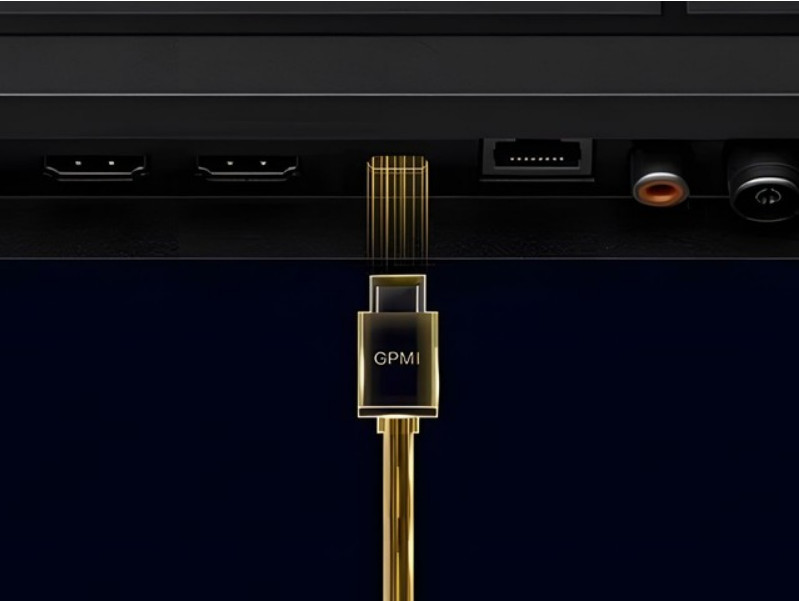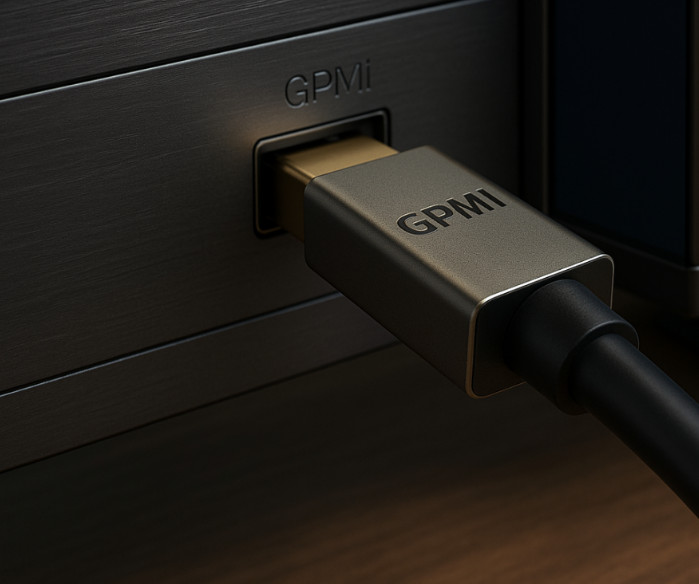GPMI Advantages:
* One-line integration: Simultaneously supports audio, video, data, control signals, and power, simplifying connectivity.
* High-bandwidth transmission: Type-C reaches 96Gbps, and Type-B reaches up to 192Gbps, supporting higher resolutions and frame rates, surpassing HDMI and DisplayPort.
* High-power delivery: Provides up to 480W, directly powering high-power devices to meet high-performance display and computing needs.
* Modular design: Promotes the popularization of "disconnected display and computing" split TVs, allowing users to freely combine and upgrade.
* Two-way control: Supports inter-device control, such as a TV controlling a set-top box or a phone controlling a monitor.
* Compatible with the USB-C ecosystem: GPMI Type-C has been certified by the USB Association as SVID, facilitating integration with mobile phones, laptops, and more.

GPMI is a new digital audio and video transmission interface that addresses the issues of unified standards and single functionality found in existing interfaces such as HDMI and DisplayPort.
GPMI's multi-functional integration allows it to perform multiple functions, including audio and video streaming, data transmission, network connectivity, control signal transmission, and power supply, through a single cable.
High Bandwidth and High Power:
Supports extremely high data rates and power delivery capabilities. For example, GPMI Type-B can reach 192Gbps and 480W of power, while GPMI Type-C, compatible with the USB-C form factor, can reach 96Gbps and 240W.
Bidirectional Multi-Stream and Control: It features bidirectional multi-streaming (mixed bidirectional transmission of video and data streams) and bidirectional control (bidirectional transmission of control signals between devices), allowing reverse control between devices.
GPMI Ecosystem Compatibility: GPMI Type-C is compatible with the existing USB Type-C interface, enhancing versatility.
GPMI High-Specification Applications: Supports 8K UHD video transmission and offers advantages such as fast wake-up and full-chain security.
GPMI: A Next-Generation Ultra-High-Definition Audio and Video Interface Standard
After more than a century of development, the audio and video industry has seen explosive growth in both the variety and number of devices, leading to an increasing demand for interoperability and interactive control between devices. Currently, different devices face issues such as inconsistent interface standards and single interfaces with limited functionality. Functions such as audio and video streaming, data transmission, network connectivity, control signal transmission, and power supply require multiple interfaces or cables, resulting in complex device connections and a poor user experience. This further limits innovation in terminal form factors.
GPMI is an innovative achievement and core technological breakthrough in the audio and video industry. It integrates video transmission, data interaction, network connectivity, and power supply, enabling a single interface to support the full range of service needs: audio and video + data + network + control + power supply.
Multifunctional Integration Core Technology:
Combining Seven Key Features
Compared to existing interface technologies, GPMI boasts seven core advantages: bidirectional multi-streaming, bidirectional control, high-power power supply, ecosystem compatibility, ultra-fast transmission, fast wake-up, and full-chain security, comprehensively leading the upgrade of audio and video technology.
GPMI Multifunctional Integration Application Scenarios and Market Value
Simplified Connection: Interface Cost Reduction and Efficiency Improvement
GPMI integrates four functions: audio, video, data, control, and power, through a single interface, reducing cable count and supporting 8K UHD video transmission. Daisy-chain network technology enables "one-wire cascading" of multiple devices, reducing installation costs for scenarios such as multi-device home use (speakers, game consoles, etc.) and outdoor video wall displays, while achieving low latency and high image quality.
GPMI Bidirectional Interaction: Screen Control and Ecosystem Expansion
GPMI's bidirectional control protocol enables cross-device reverse control through the TV, allowing TV remotes and third-party controllers to control mobile games and other applications, thus "transferring" the mobile ecosystem to the big screen.
GMPI's new products will be launched soon. Please call us for inquiries!
https://www.king-lai.com.tw/
























